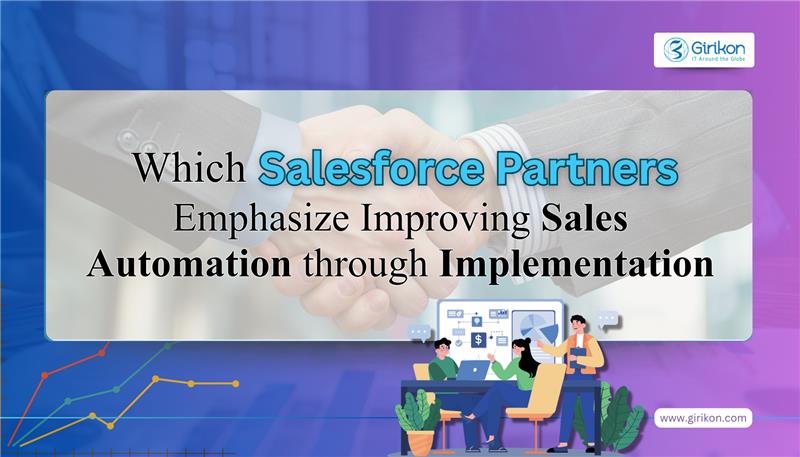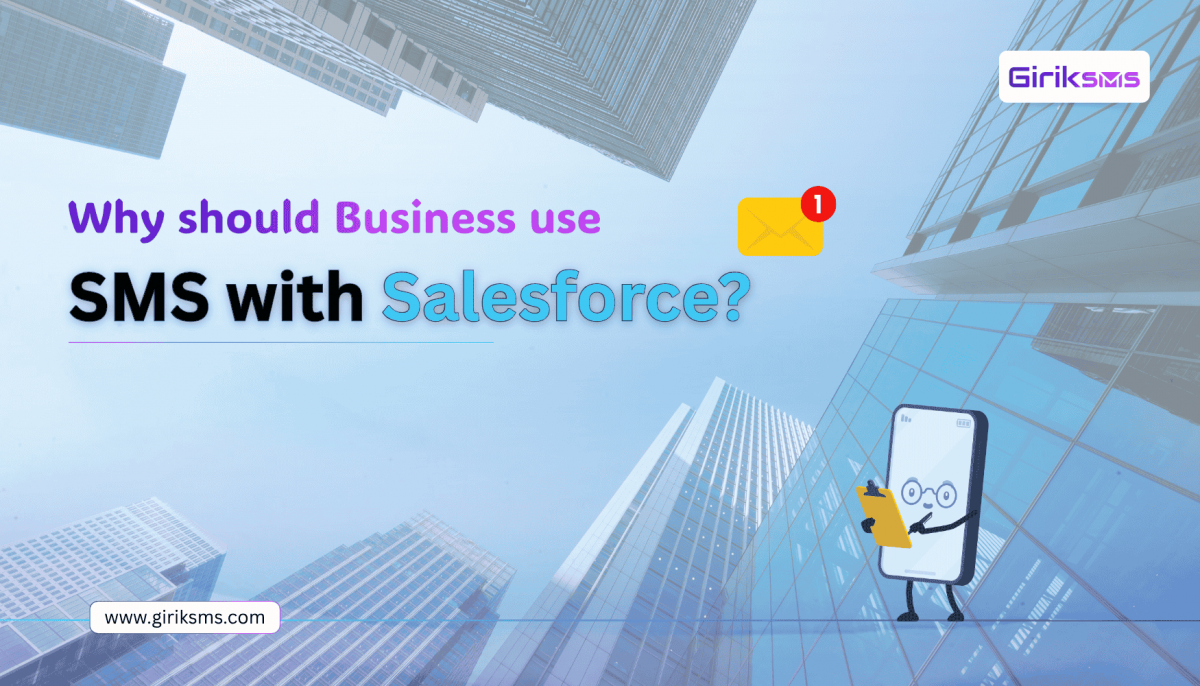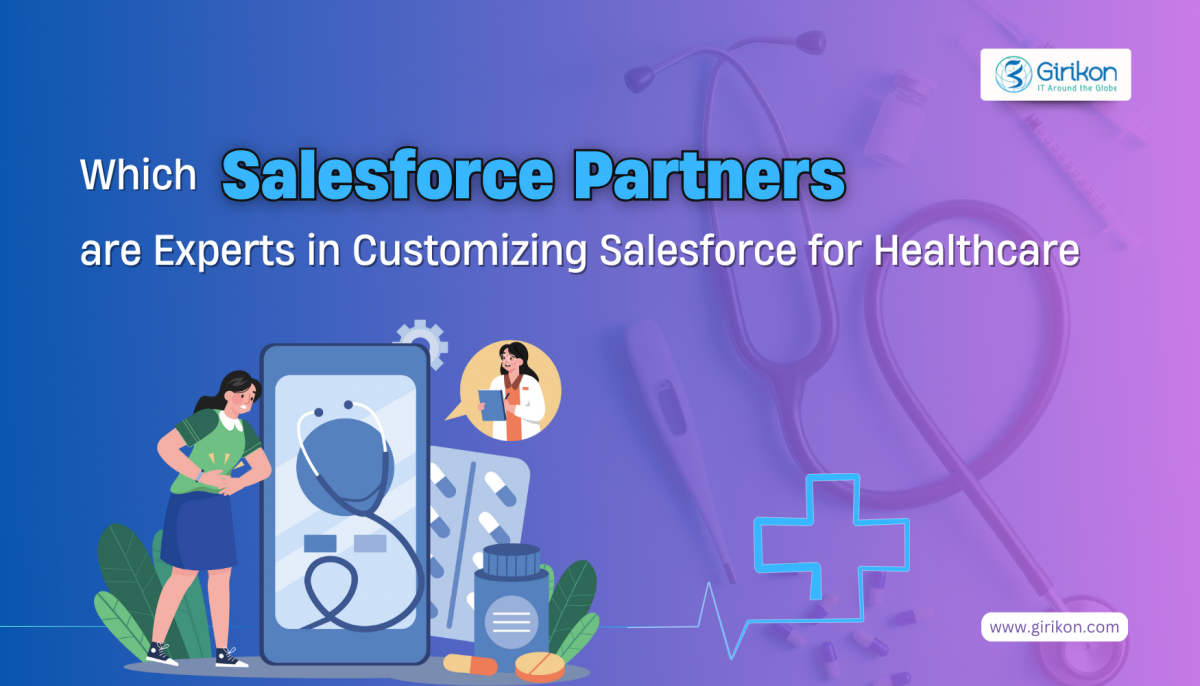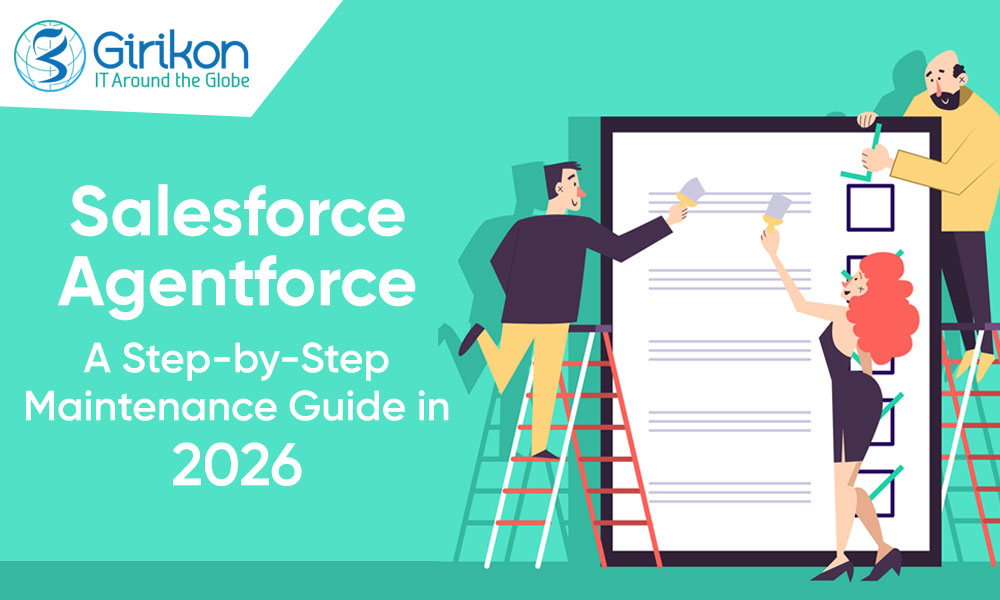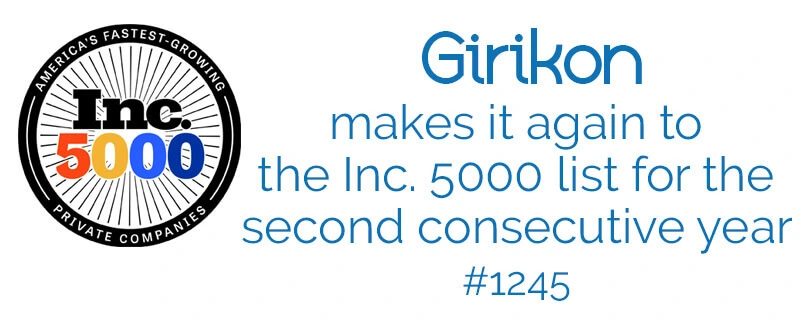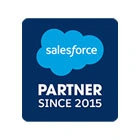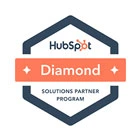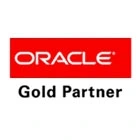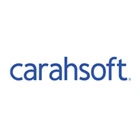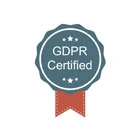While the secret to understanding customers lies in your data, making sense of that data is a totally different ball game. Evolution in technology and concerns around user privacy have mushroomed new challenges for marketers to know their audience and deliver data-driven experiences. An AI-powered customer data platform (CDP) addresses these challenges and more. CDPs can connect with a single storehouse of data – one that is proprietary, trusted, and acquired with consent.
Salesforce’s own CDP, Marketing Data Cloud, takes things up a notch. It puts marketers in control of the entire customer journey, allowing them to connect, unify, and act on data across all marketing touchpoints and enhance the customer experience across teams and departments – from sales, marketing, service, commerce, and more. Marketing Data Cloud from Salesforce accomplishes four primary functions:
It connects. Connect all your customer data across apps, channels, and devices with out-of-the-box connectors, at scale.
It harmonizes. Aggregate all your data into a single customer profile, autonomously. Data across multiple channels and teams all integrate seamlessly using configurable rules.
It engages. Empower all departments with unified customer profiles and update them in real-time via AI-powered analytics.
It delivers an experience. Data activated from Marketing Data Cloud drives real-time, tailored, timely customer experiences.
In this article, we talk about eight use cases of how Marketing Data Cloud applies these aspects to resolve common challenges faced by marketers, along with their colleagues in sales, service, and commerce. From enhancing engagement to winning customer loyalty, these data-driven methodologies ensure a robust CDP can make every interaction count.
The Engagement Booster
Engage your customers at the right moment with real-time data.
Benefits: Better engagement with improved efficiency
KPIs: Email Click-Through Rates, Conversions, Revenue
Data Involved: Customer engagement data, web data, sales data, web and app visits, browsing history.
CONNECT. CDP connects data from all sources within and outside of Salesforce.
HARMONIZE. The customer's unified profile is created in the CDP. It includes all their engagement activity from across multiple channels and departments. And automatically updates the data in real time with every interaction. And if a customer opts in, CDP can automatically send personalized texts with tailored offers at the right time.
ENGAGE. Geolocation data from a customer’s phone activates an engagement action. And when they walk into a physical store, a tailored offer is sent to their phone via the Salesforce messaging app to nudge them to make a purchase.
EXPERIENCE. A customer is out shopping for a new smartphone that they have been eyeing for a while. To their surprise, they get a discount on the exact same product that they wanted to buy, right when they get to the aisle.
The Smart Advertiser
Make every dollar spent on ads count.
Benefits: Higher Efficiency
KPI: Return on Ad Spend
Data Involved: Customer loyalty status, purchase history, case history, email interactions, browsing history, and geo-location history.
CONNECT. CDP connects all customer data within as well as outside Salesforce – loyalty, purchases, case history, engagement data, demographics, and affinity data.
HARMONIZE. CDP pulls out the customer’s unified profile and creates AI-powered segments. Segment-level data insight from ad partners is incorporated to refine customer segments further for eg, customers looking for specific products and services.
ENGAGE. CDP activates these segments on popular ad platforms to hyper-personalize ads for customers, all this while protecting the customer’s privacy. At the same time, CDP also suppresses ads to customers with unresolved service cases, customers who already purchased the item or returned it, and those unlikely to engage.
EXPERIENCE. Customers view ads of products or upgrades, precisely what they had in mind and within their preferred price band.
The Shopper Styler Drive
Increase revenue with hyper-personalized e-commerce.
Benefits: Higher Conversions
KPIs: E-commerce Revenue
Data Involved: Purchase history, browsing history, activity behavior, loyalty status, case history, and email interactions.
CONNECT. CDP pulls data from all touchpoints between the customer and the brand such as purchase history, buying preferences, loyalty data, service engagement, website, and app engagement, and more.
HARMONIZE. Leveraging the customer’s unified profile, CDP derives intelligent Insights on new metrics such as “propensity score” to predict the customer’s likelihood to buy a particular product. These insights enable marketers to make faster, data-driven, decisions. CDP can drive tailored shopping experiences and promote those products.
ENGAGE. Commerce Cloud leverages insights from Data Cloud to provide tailored shopping experiences to the customer on their brand’s online store or app. And with the help of the customer’s propensity score, data points such as reward points, recent purchases, and recommended products are automatically served up. CDP can automatically activate relevant and timely actions in the customer’s journey. Actions like clicks and cart abandonment can initiate a background process that anticipates the customer’s needs and encourages action.
EXPERIENCE. When a customer visits their favorite mobile accessories brand’s website or app, they get personalized product recommendations. And if they abandon the cart before checkout (for whatever reason), CDP can automatically fire a reminder email with a discount incentive to nudge them to complete the order.
The Website Winner
Improve conversion with personalized experiences.
Benefits: Increased engagement, higher conversions
KPIs: Bounce rate, browsing history, average time spent on a product, session duration.
Data Involved: Purchase history, engagement data, loyalty status.
CONNECT. CDP draws together customer data across marketing, commerce, sales, and service interactions.
HARMONIZE. After unifying all the customer data into a single customer profile, CDP identifies a customer’s past purchase behavior, including their recent purchases. CDP then places the customer in the post-sale segment focused on helping them to derive immediate value from their latest purchase.
ENGAGE. Based on the customer’s recent purchase data, CDP fires a personalized text via the Salesforce messaging app, with a link to the brand’s website to prompt them to learn more about the product and its usage. And as soon as the customer lands on the website, the page is dynamically populated with relevant how-to articles, care instructions, and other relevant and personalized content.
EXPERIENCE When the customer clicks on the link to the website, they land on a webpage populated with relevant content based on their recent activity. This includes product-related articles, videos, images, and additional offers.
The Cross-Seller
Intelligent predictions for your customers’ next purchase.
Benefits: More upsell and cross-sell opportunities, higher conversions
KPIs: Sales, Product popularity, Average cart size
Data Involved: Purchase history, browsing history, engagement data, loyalty status.
CONNECT. CDP connects sales, loyalty, and service data to generate unified customer profiles and offers intelligent insights to reveal opportunities for cross-selling and up-selling based on the data. It can also suggest customer lifetime value (CLV), propensity scores, engagement scores, and more.
HARMONIZE. CDP-powered insights create a new metric called affinity score which predicts a customer’s affinity towards other products. CDP then leverages this data to define new customer segments based on the insights.
ENGAGE. CDP then activates this customer segmentation data across multiple customer engagement platforms. Customers get personalized emails, texts, tailored web and app experiences, and personalized ads on their preferred channels.
EXPERIENCE. As customers browse an online store or app, personalized product recommendations are automatically served up. Customers can view these items and complete the purchase.
The Insight Viewer
Analyze marketing performance.
Benefits: Optimized performance, Deeper Insights, Improved average time for ROI.
KPIs: Product Views, Sales, ROI.
Data Involved: Purchase history, cross-channel activity, Engagement, and Campaign performance.
CONNECT. CDP connects data from all touchpoints across marketing, sales, service, and commerce, to create unified customer profiles. Analytics tools such as Tableau and Marketing Cloud Intelligence leverage this data to augment audience discovery and measurement.
HARMONIZE. Marketing Cloud Intelligence helps marketers optimize campaigns and customer journey performance. Tableau provides deep customer insights to help teams discover new customer segments and behaviors that drive adoption and increase their lifetime value.
ENGAGE. CDP drives the wheel of optimization. Marketing Cloud Intelligence uses data from CDP to refine campaigns. Tableau serves up intelligent audience insights, identifying high engagement areas. These insights then flow back to CDP to drive hyper-personalization in every moment.
EXPERIENCE. As customers enjoy their purchases, brands stay connected with personalized offers on their preferred channels. As data is being gathered and analyzed on the go, brands can measure and optimize campaign performance, discover new segments, and act on high-value actions.
The Service Solver
Convert service cases into happy customers.
Benefits: Customer Satisfaction
KPIs: Service Cases Created, Duration of open cases, CSAT (Customer Satisfaction Score)
Data Involved: Purchase history, Sales data, Service Data, Engagement data, Browsing activity.
CONNECT. CDP pulls in comprehensive service data like service cases, customer service feedback, lifetime value, loyalty data, and more.
HARMONIZE. Service data in CDP augments the customer segmentation process. This helps marketers refine their engagement strategy based on customer service interactions.
ENGAGE. In a scenario where a customer has an open service case, CDP gets notified and pauses all marketing activities tailored for that customer until the case is closed. Additionally, because CDP is receiving all service data, the customer service team has access to the customer’s profile enabling them to be aware of their problem as soon as they reach out to a service rep, and then quickly resolve the issue.
EXPERIENCE. Customers get their order related issues resolved in a matter of minutes. When a new case is logged, the service team quickly reaches out to the customer, being aware of their order and having access to their unified profile. Not only does the customer get the issue resolved quickly, but they automatically get a personalized email or text with a 10% discount voucher for their next purchase to make up for the mistake.
The Loyalty Earner
Reward customers at every stage.
CONNECT. CDP connects data from a brand’s loyalty system into a customer’s unified profile, along with marketing, sales, and service data.
HARMONIZE. Based on interactions with customers in a particular segment, CDP automatically places them into the relevant loyalty tier giving them access to tiered marketing offers and deals automatically.
ENGAGE. CDP activates this segment across multiple engagement platforms and customers in this segment automatically start receiving personalized content. The content (which includes product recommendations and offers) is linked to their loyalty status and encourages them to aspire to be in the next loyalty tier for further exclusive benefits such as rewards, discounts, preorders, and more.
EXPERIENCE. A customer’s latest purchase of mobile accessories automatically moves them to the next tier of loyalty status. This gives them access to exclusive discounts and offers.
It’s time to build your own customer data strategy, and if you have one, you can always refine it. Our extensive experience in Salesforce consulting services can help. With a robust CDP, marketing teams can connect every interaction throughout the customer journey with a unified source of actionable, real-time data. They can truly understand their audience and deliver personalized engagement that drives revenue and builds lasting relationships. And that’s not where the value of CDP ends. In fact, it is just the beginning. Every department and team across sales, service, and commerce can also benefit from the power of a CDP. Powered by Customer 360, Marketing Data Cloud unifies all customer data across all channels and departments to create a single, unified customer profile that is updated in real-time with every interaction. With a unified view of your customer, Marketing Data Cloud empowers marketing, sales, service, and commerce teams to make every moment count.
With a robust Customer Data Platform, your business can interact with your customers not as disparate departments, but as one brand with one voice. A brand that understands and engages with confidence, relevance, and trust. Whether it is prompt Salesforce support, hyper-personalized product recommendations or hyper-segmented targeted advertising, with Marketing Data Cloud you can make every customer interaction count and unlock the true power of real-time customer data. Want to learn more? Connect with our Marketing Data Cloud specialist today.
It’s an exciting time for knowledge workers. Many new work opportunities are opening up quickly in the AI-related workspace. Artificial Intelligence and the game-changing technology of generative AI are helping to create a range of new career options, starting from prompt engineers, and use case designers, to AI trainers. Our team of experts has compiled a list of a dozen new and upcoming AI-related roles, along with tips on how to prepare for these roles.
Everywhere. For everyone. Yes, that’s the scope of leveraging AI technologies in business. And that includes the job market as well.
The holistic view
According to a McKinsey report, generative AI has the potential to add over $4 trillion in value to the world’s economy pan-industry. This includes manufacturing, retail, financial services, telecom, construction, high tech, healthcare, and pharma. It will impact job functions such as sales, marketing, customer service, engineering, HR, and research and development.
While AI holds limitless promise for transforming businesses in the way they work, there is also an underlying current of uncertainty and fear around AI taking jobs away. In this article, we quash that myth and talk about how this new disruptive technology will, in fact, create a variety of new career opportunities for the global workforce. For instance, lucrative roles like prompt engineering, the art of creating effective prompts for GPT interfaces, and AI roles such as AI product manager are currently trending on popular job portals.
Salesforce recently sponsored an IDC-authored white paper where they surveyed 500 organizations that are currently using AI-powered solutions. The whitepaper concluded that over the next 12 months, we will witness a sharp rise in demand for data architects, ethical AI specialists, AI product designers, and AI solution architects. The report also predicts nearly 12 million new jobs will be created within the Salesforce ecosystem alone over the next six years. Now that’s a number business leaders and HR departments cannot ignore.
What you can do now
AI needs people to be at the helm of affairs for it to work effectively and deliver on the promise it holds. And the global workforce, across all levels across all industries, has the golden opportunity, at this very moment, to sharpen their existing skills and acquire new ones to grow with the economy.
The exciting thing about AI tools and solutions is that they are still in the early stages of deployment and are mostly democratized. So, if people have the will, they can learn on their own how to augment their current value. And the requisite resources are already there. Platforms such as Trailhead (from Salesforce), Coursera, Udemy, etc offer free and paid courses to certify you on AI-related skills.
AI will eliminate redundancy and create new roles
Let’s understand one thing very clearly. Yes, AI will probably eliminate repetitive tasks such as scheduling social media posts, going through resumes, examining data, answering common customer service questions, and composing and sending follow-up emails. But all this will free up a lot of time for workers to spend adequate time on strategic, creative, and productive tasks in their existing roles.
With the adoption of AI, workers will now have time to do actual work. If you’re a sales professional or work in customer service, you can now allocate more time to what matters – interacting with customers to nurture those relationships. If you work in marketing, you can spend more time crafting marketing strategies or working on creative projects. And if you work in legal or healthcare, you can leverage AI technology to research and analyze agreements or help interpret CT scans and X-rays.
While new AI jobs in engineering or data-related fields are obvious, new roles in healthcare, financial services, legal, construction, etc will evolve with the evolution of smart AI. AI will be like the sky, the background of everything else that happens over it.
12 new roles that may be created with the advancement in generative AI
Curious about AI and how it can augment your current skill set and role? Here are 12 opportunities to look out for. Some of these are already in the initial stages of existence while others are what our experts believe, will crop up in the near term. Do you see yourself in one of these in the future?
Prompt engineer
Prompt engineers are masters at composing prompts for AI tools such as GPT tools or chatbots. Writing great prompts is key to unlocking the effectiveness of generative AI. Some AI ambassadors refer to it as AI whispering. After all, you are basically guiding the AI tool to provide you with a creative answer to your prompt or question.
AI trainer
AI trainers work in the background to ensure the learning algorithms driving AI do what they are supposed to. AI gets better as it gets more and more data to play with. AI trainers prepare these data sets to teach the learning algorithms how to think and respond to user inputs (prompts) in a more human-like language. AI trainers also refine the data and direct engineering teams to achieve more relevant and accurate outcomes. In a nutshell, AI trainers teach AI tools on how to think, communicate, and be useful.
AI learning designer
As AI technology evolves rapidly (and we have only seen the tip of the iceberg), businesses will need workers to optimize individual learning at scale. AI learning designers assist businesses in training their workers on AI tools and systems, including training them on how AI copilots can complement their work. Not only that, they will go one step further to refine the very ways in which people learn. Businesses that have better learning frameworks and strategies will be in a better position to adapt to emerging AI technology.
AI instructor
As businesses continue to invest in AI tools and systems, they will also need people to train their employees on how to use them. AI instructors help people further their careers by teaching them the necessary AI skills even if they are currently not involved in AI. An AI instructor’s responsibilities include developing a curriculum, creating teaching methodologies, conducting hands-on classes, and providing a more holistic AI education.
Sentiment analyzer
While AI can understand and interpret natural language, it is still not human and does not possess empathy. AI cannot recognize nuances of language, particularly when we have so many, and cannot interpret human emotion. This is why a sentiment analyzer’s role is important. They leverage a sentiment analysis program to establish if data extracted from a public source such as social media comments or feedback is positive, neutral, or negative by identifying its emotional tone.
Stitcher
A stitcher’s role is a generic one. They use AI to stitch together a variety of skills across multiple roles into a single role. For instance, they leverage AI to combine modular apps and tools into a single workflow that delivers unique value to customers.
Interpersonal coach
This role, as the name suggests, is based on a soft skills development function. Interpersonal coaches help the digital workforce and the ones working with AI, to grow their interpersonal skills such as social intelligence, empathy, mindful listening, and managing face-to-face interactions. It’s similar to a soft-skills trainer, except that it's more focused on helping people who work in the background or mostly with computers.
Workflow optimizer
This role is critical for companies as it deals with the soul of any business – data. They leverage data and system intelligence to have a 360-degree view of a business and identify areas where AI could help workers be more productive. A workflow optimizer uses AI to analyze how people and teams work and identify productivity gaps to boost overall efficiency.
AI compliance manager
AI is still at a nascent stage and the regulations and guidelines are fluid and ever-changing. As they continue to get more refined and standardized, an AI compliance manager’s job is to make sure his company’s AI processes abide by existing regulations, guidelines, and ethical standards. They ensure that their organization’s data management practices are aligned with privacy laws and mitigate AI’s potential legal impact on the company.
AI security manager
AI technology can become dangerous if it gets into the wrong hands. The function of an AI security manager is to ensure AI systems are used with honesty and integrity. They also ensure sufficient guard rails are in place to protect against any threats and vulnerabilities.
Chief AI officer
The newest entrant in the C-suite league, the CAIO’s primary function is to guide and manage a holistic AI strategy for the organization. This includes ensuring the development and deployment of responsible and trusted AI systems across the organization.
Chief data and analytics officer
This role entails overseeing everything related to data and analytics in an organization. Depending on the size of the enterprise or the scale of AI being used by the company, this role is sometimes shared between two people, a chief data officer and a chief analytics officer.
How to prepare for new AI careers
With all of these AI opportunities opening up, it’s time to buckle up, commence training, and start having fun with some of the free AI tools. View these tools as someone who can help you to improve the way you work and how you do it.
With so many online learning platforms available at our fingertips, we can quickly start educating ourselves on AI-related technologies and upgrade our current skill set.
At Girikon, a Gold Salesforce Implementation Partner, we believe that if we embrace change and the opportunities that come with it, we open doors to new possibilities. The need of the hour is to be curious and bold. Connect with an expert today. Our team of certified Salesforce Consultants would be happy to guide you.
AI chatbots in Salesforce
-
April 2, 2024
-
Indranil Chakraborty
Salesforce Chatbot enables businesses to offer personalized and prompt service using AI-powered bots available natively in the CRM. Now you can supercharge customer case resolution with clicks not code by automating mundane, time-consuming tasks by linking AI with your CRM data. This empowers service teams to do more by leveraging AI-generated responses to customer queries.
Before going into how AI chatbots can be pivotal in customer service, let’s educate ourselves on the basics.
What is a chatbot?
A chatbot (derived from “chat robot”) is a software program that can simulate human conversation (voice or text) and can solve a problem. Businesses typically use chatbots to augment customer service to complement traditional service channels such as phone and email.
Just like software can be configured and customized in any way you want, chatbots can also be customized and used in ways that are aligned with your goals. We are already familiar with bots for customer service that are used with popular messaging platforms like SMS and WhatsApp.
With AI chatbots, users can interact with a computer program to find answers quickly. Most notably, chatbots can enhance customer relationships by responding to queries faster at their convenience by being available round the clock. With 24/7 availability to serve up responses, chatbots free up time for service teams so that they can work on more complex issues that require a touch of empathy.
How do chatbots work?
Chatbot development has evolved leaps and bounds over the last decade or so, as developers have adopted sophisticated techniques and technological advancements in machine algorithms to enable chatbots to contextually understand user questions and offer more useful responses.
While bots today still aren’t equipped to handle all user queries, they can easily respond to commonly asked questions or execute simple, repetitive tasks without any human intervention. One such example is when a chatbot parses customer input, identifies keywords or phrases, and then scans the organization's data to retrieve relevant articles based on those keywords or phrases.
Chatbots typically follow a pre-defined decision tree, which is why they are often referred to as rule-based chatbots. Rule-based chatbots execute pre-defined actions based on user input.
Rule-based chatbots are based on click actions, like a user responding with a binary input like a “yes” or “no,” or by recognizing specific keywords. You would have come across instances when you typed a question into a website’s pop-up box and got an answer that had no relevance to the question. That usually happens when although the chatbot recognized keywords in your input, it did not understand their context. This is where AI chatbots come in.
What is an AI chatbot?
The level of sophistication involved in chatbot technology cannot be overstated. With inbuilt natural language processing (NLP) capability, chatbots can engage in human-like conversations with users effortlessly. Engineering teams are relying on NLP to build AI chatbots that can understand human speech and text better. With NLP, it is now possible to better recognize user intent and consequently provide better, more intelligent responses.
With the latest disruptive tech of generative AI, chatbots can interpret context in written text, which allows it to work on its own. In simple terms, AI chatbots can understand language outside of pre-defined rules and offer responses by relying on existing data. This allows users to navigate the conversation and allows the bot to follow.
By drawing on huge data sets and the processing power of the machine, AI- chatbots can leverage deep learning algorithms to significantly improve their quality of understanding questions and offer more accurate responses.
When chatbots connect with technologies such as Large Language Models (LLMs) and NLP, they can train themselves to simulate human conversation better by:
Maintaining the context of the interaction.
Managing a personalized conversation.
Refining responses based on the changing customer needs.
AI chatbots get better with every interaction. They do this by connecting with deep learning algorithms and drawing on enormous amounts of conversational data stored in the CRM database.
3 Benefits of Using AI Chatbots in Salesforce:
Businesses, irrespective of size and the domain they operate in, can derive the benefits of process automation, particularly a function that delivers direct value to their customers. With chatbots, you are available to your customers round the clock, giving them 24/7 access to your business. They are also able to get quick responses to common questions anytime, from any device.
Reduce Human Intervention
As a business leader, you would be aware that not every customer query needs you to dedicate human resources to respond to that query. Just like a knowledge base or a library of FAQs in Service Cloud can offer relevant and accurate information to customers whenever they need it, a chatbot can automate this process by understanding their queries and serving up the right answers. Chatbots can be very useful in increasing the deflection rate of customer support cases.
Reduce Costs and Improve Productivity
Leveraging chatbots to automate mundane, repetitive tasks and straightforward processes gives your internal teams more time to focus on more critical and creative tasks. This leads to a significant reduction in manpower especially in your customer service teams.
The ROI of using a chatbot to free up agent time so that they can focus more on doing what’s most important- nurturing customer relationships, is a figure you cannot ignore. Your internal team performance will witness a significant improvement as well, since your service agents are focused on solving complex problems where human intervention is necessary, translating to higher-quality customer service. Time is a commodity that is available in limited quantity to every organization, and chatbots allow service teams to do more with less.
If you wish to scale up your business without the associated costs of additional resources, you should look at AI-powered chatbots. Entrusting many of the repetitive, mundane tasks across departments to an AI chatbot and having the provision to escalate a case to a human agent as and when required will boost the morale of your teams, improve staff retention, and allow them to shine in their work.
Customers Notice Innovation
Customers often compare 2 or more brands that offer the same products or services that they are looking for. And if your business is completely human powered it means customers sometimes will have to wait for their turn for a human agent to be available to get their issue resolved. If your competitor is offering chatbot-powered customer service which allows
customers to self-serve and find answers quickly, they will notice the difference in service availability which will compel them to choose the latter.
Let’s look at an example. A visitor to your website asks the chatbot for pricing information and more details about a particular product or service. The chatbot can immediately dive into Salesforce data and serve up the information instantly to the website visitor. Compare it with getting a message “Please wait a moment while we find an agent to talk to you.”
Let’s look at another scenario. The website visitor wants to book a demo to see how your product actually works. All he needs to do is type – “I want to book a demo”. The chatbot can immediately open a calendar for him to select a convenient time and date and once the visitor has made a selection, the bot can immediately check rep availability by diving into the booking system which is also connected to Salesforce, and then confirm the appointment. All this without ever leaving the chat conversation.
The use of chatbots in customer service has increased dramatically over the last 5 years and with the advancement in AI technology, it is going in only one direction.
Why Should You Consider an AI Chatbot for Salesforce?
Looking to invest in chatbot technology? Heard and read a lot about them and their benefits in the context of business but don’t know where to start? There are several ways of approaching this, with so many options available in the market. If you are starting out, the best way to do this is within your single source of truth – Salesforce.
And the reason is very simple. A Salesforce native chatbot can leverage customer data, product and service data, and knowledge base, to engage customers and serve up relevant and accurate answers. A Salesforce native chatbot can also trigger automations at appropriate events within Salesforce making it very productive and tightly aligned with your business goals.
Salesforce does come with AI-powered bots called Einstein Bots. Einstein Bots are powerful, and available out-of-the-box in Salesforce. They require a Service Cloud license along with a chat or messenger license with each license offering 25 bot conversations per user per month.
Einstein Bots also come with an inbuilt Salesforce Messaging App allowing businesses to engage in text conversations with customers via SMS and WhatsApp.
AI Chatbot from Salesforce is a powerful tool to re-imagine customer experiences, automate processes, and improve productivity. With round-the-clock availability and immediate responses, AI Chatbots from Salesforce transform the way businesses connect with their customers.
To learn more about AI Chatbots for Salesforce, connect with an expert today.
Managing the Risks of Generative AI
-
March 27, 2024
-
Indranil Chakraborty
Business leaders, lawmakers, academicians, scientists, and many others are looking for ways to harness the power of generative AI, which can potentially transform the way we learn and work. In the corporate world, generative AI has the power to transform the way businesses interact with customers and drive growth. The latest research from Salesforce indicates that 2 out of 3 (67%) of IT leaders are looking to deploy generative AI in their business over the next 18 months, and 1 out of 3 are calling it their topmost priority. Organizations are exploring how this disruptive technology of generative AI could impact every aspect of their business, from sales, marketing, service, commerce, engineering, HR, and others.
While there is no doubt about the promise of generative AI, business leaders want a trusted and secure way for their workforce to use this technology. Almost 4 out of 5 (79%) of business leaders voiced concerns that this technology brings along the baggage of security risks and biased outcomes. At a larger level, businesses must recognize the importance of ethical, transparent, and responsible use of this technology.
A company using generative AI technology to interact with customers is in an entirely different setting from individuals using it for private consumption. There is an imminent need for businesses to adhere to regulations relevant to their industry. Irresponsible, inaccurate, or offensive outcomes of generative AI could open a pandora’s box of legal, financial, and ethical consequences. For instance, the harm caused when a generative AI tool gives incorrect steps for baking a strawberry cake is much lower than when it gives incorrect instructions to a field technician for repairing a piece of machinery. If your generative AI tool is not founded on ethical guidelines with adequate guardrails in place, generative AI can have unintended harmful consequences that could back come to haunt you.
Companies need a clearly defined framework for using generative AI and to align it with their business goals including how it will help their existing employees in sales, marketing, service, commerce, and other departments that generative AI touches.
In 2019, Salesforce published a set of trusted AI practices that covered transparency, accountability, and reliability, to help guide the development of ethical AI systems. These can be applied to any business looking to invest in AI. But having a rule book on best practices for AI isn’t enough; companies must commit to operationalizing them during the development and adoption of AI. A mature and ethical AI initiative puts into practice its principles via responsible AI development and deployment by combining multiple disciplines associated with new product development such as product design, data management, engineering, and copyrights, to mitigate any potential risks and maximize the benefits of AI. There are existing models for how companies can initiate, nurture, and grow these practices, which provide roadmaps for how to create a holistic infrastructure for ethical, responsible, and trusted AI development.
With the emergence and accessibility of mainstream generative AI, organizations have recognized that they need specific guidelines to address the potential risks of this technology. These guidelines don’t replace core values but act as a guiding light for how they can be put into practice as companies build tools and systems that leverage this new technology.
Guidelines for the development of ethical generative AI
The following set of guidelines can help companies evaluate the risks associated with generative AI as these tools enter the mainstream. They cover five key areas.
Accuracy
Businesses should be able to train their AI models on their own data to produce results that can be verified with the right balance of accuracy, relevance, and recall (the large language model’s ability to accurately identify positive cases from a given dataset). It’s important to recognize and communicate generative AI responses in cases of uncertainty so that people can validate them. The simplest way to do this is by mentioning the sources of data which the AI model is retrieving information from to create a response, elucidating why the AI gave those responses. By highlighting uncertainty and having adequate guardrails in place ensures certain tasks cannot be fully automated.
Safety
Businesses need to make every possible effort to reduce output bias and toxicity by prioritizing regular and consistent bias and explainability assessments. Companies need to protect and safeguard personally identifying information (PII) present in the training dataset to prevent any potential harm. Additionally, security assessments (such as reviewing guardrails) can help companies identify potential vulnerabilities that may be exploited by AI.
Honesty
When aggregating training data for your AI models, data provenance must be prioritized to make sure there is clear consent to use that data. This can be done by using open-source and user-provided data, and when AI generates outputs autonomously, it’s imperative to be transparent that this is AI-generated content. For this declaration (or disclaimer), watermarks can be used in the content or by in-app messaging.
Empowerment
While AI can be deployed autonomously for certain basic processes which can be fully automated, in most cases AI should play the role of a supporting actor. Generative AI today is proving to be a powerful assistant. In industries, such as financial services or healthcare, where building trust is of utmost importance, it’s critical to have human involvement in decision-making. For example, AI can provide data-driven insights and humans can take action based on that to build trust and transparency. Furthermore, make sure that your AI model’s outputs are accessible to everyone (e.g., provide ALT text with images). And lastly, businesses must respect content contributors and data labelers.
Sustainability
Language models are classified as “large” depending on the number of values or parameters they use. Some popular large language models (LLMs) have hundreds of billions of parameters and use a lot of machine time (translating to high consumption of energy and water) to train them. To put things in perspective, GPT3 consumed 1.3 gigawatt hours of energy, which is enough energy to power 120 U.S. homes for a year and 700k liters of clean water.
When investigating AI models for your business, large does not necessarily mean better. As model development becomes a mainstream activity, businesses will endeavor to minimize the size of their models while maximizing their accuracy by training them on large volumes of high-quality data. In such a scenario, less energy will be consumed at data centers because of the lesser computation required, translating to a reduced carbon footprint.
Integrating generative AI
Most businesses will embed third-party generative AI tools into their operations instead of building one internally from the ground up. Here are some strategic tips for safely embedding generative AI in business apps to drive results:
Use zero or first-party data
Businesses should train their generative AI models on zero-party data (data that customers consent to), and first-party data, which they collect directly. Reliable data provenance is critical to ensure that your AI models are accurate, reliable, and trusted. When you depend on third-party data or data acquired from external sources, it becomes difficult to train AI models to provide accurate outputs.
Let’s look at an example. Data brokers may be having legacy data or data combined incorrectly from accounts that don’t belong to the same individual or they could draw inaccurate inferences from that data. In the business context, this applies to customers when the AI models are being grounded in that data. Consequently, in Marketing Cloud, if all the customer’s data in the CRM came from data brokers, the personalization may be inaccurate.
Keep data fresh and labeled
Data is the backbone of AI. Language models that generate replies to customer service queries will likely provide inaccurate or outdated outputs if the training is grounded in data that is old, incomplete, or inaccurate. This can lead to something referred to as “hallucinations”, where an AI tool asserts that a misrepresentation is the truth. Likewise, if training data contains bias, the AI tool will only propagate that bias.
Organizations must thoroughly review all their training data that will be used to train models and eliminate any bias, toxicity, and inaccuracy. This is the key to ensuring safety and accuracy.
Ensure human intervention
Just because a process can be automated doesn’t mean that’s the best way to go about it. Generative AI isn’t yet capable of empathy, understanding context or emotion, or knowing when they’re wrong or hurtful.
Human involvement is necessary to review outputs for accuracy, remove bias, to ensure that their AI is working as intended. At a broader level, generative AI should be seen as a means to supplement human capabilities, not replace them.
Businesses have a crucial role to play in the responsible adoption of generative AI, and integrating these tools into their everyday operations in ways that enhance the experience of their employees and customers. And this goes all the way back to ensuring the responsible use of AI – maintaining accuracy, safety, transparency, sustainability, and mitigating bias, toxicity, and harmful outcomes. And the commitment to responsible and trusted AI should extend beyond business objectives and include social responsibilities and ethical AI practices.
Test thoroughly
Generative AI tools need constant supervision. Businesses can begin by automating the review process (partially) by collecting AI metadata and defining standard mitigation methods for specific risks.
Eventually, humans must be at the helm of affairs to validate generative AI output for accuracy, bias, toxicity, and hallucinations. Organizations can look at ethical AI training for engineers and managers to assess AI tools.
Get feedback
Listening to all stakeholders in AI – employees, advisors, customers, and impacted communities is vital to identify risks and refine your models. Organizations must create new communication channels for employees to report concerns. In fact, incentivizing issue reporting can be effective as well.
Some companies have created ethics advisory councils comprising of employees and external experts to assess AI development. Having open channels of communication with the larger community is key to preventing unintended consequences.
As generative AI becomes part of the mainstream, businesses have the responsibility to ensure that this emerging technology is being used ethically. By committing themselves to ethical practices and having adequate safeguards in place, they can ensure that the AI systems they deploy are accurate, safe, and reliable and that they help everyone connected flourish.
As a Salesforce Consulting Partner, we are part of an ecosystem that is leading this transformation for businesses. Generative AI is evolving at breakneck speed, so the steps you take today need to evolve over time. But adopting and committing to a strong ethical framework can help you navigate this period of rapid change.
Technology is in a constant state of flux and Salesforce, the world’s leading CRM platform is on the front lines of innovation to bring transformative technology to businesses worldwide. Here is a look at how AI is poised to transform the way we work and a sneak peek into the disruptive power of generative AI.
AI will transform the future of work
Generative AI presents an exciting new opportunity for businesses to tap into the creativity and innovation of their workforce like never before. Here are 6 predictions from Salesforce leaders on what the future workplace will look like.
1. AI will transform how we imagine and measure human productivity.
According to a State of Work report published by Salesforce, 60% of business executives say their primary method to measure team productivity is by tracking work hours and email communications. But this is set to pivot around AI. With AI at the workplace, much of the mundane, repetitive work regarded as productivity inputs up until now will be replaced by AI.
In the months to come, companies will see a transformative shift in the way performance and productivity are measured by focusing on tangible outcomes such as products launched or leads generated. To achieve this, businesses will need to measure impact rather than measuring activity. Business leaders will have to clearly define the results they want and back their teams to align efforts in the backdrop of these clear goals.
2. AI will free up employee time for more meaningful work.
AI is on course to becoming the primary choice for automating workflows so that businesses can achieve full autonomy over the next year or so. There is huge potential for AI to automate mundane tasks across the organization, from marketing and pre-sales to order processing to customer support.
By identifying repetitive tasks and leveraging organizational data to drive intelligent predictions and generate automated next steps, AI is well placed to automate and optimize traditional work patterns to free up employee time to do more meaningful profitable work.
3. AI will offset a persistent and recurring challenge for businesses – Agent attrition.
Retaining customer service staff has been a thorn in the flesh for businesses. With generative AI, they can automate multiple aspects of customer service and boost the adoption of self-service, translating to a significant reduction in recruitment costs and an improvement in agent productivity.
4. Companies will leverage data and AI to boost productivity.
The average employee is fraught with information overload. Siloed data is responsible for over 10 wasted work hours every week. In the next months, businesses that adopt generative AI will see the real impact of this technology on how they work and interact with that data.
Companies have already started deploying AI-powered knowledge bases to drive self-service, assist field teams, and get more out of customer data. In the longer term, the productivity of teams will go up a few notches with more advanced generative AI capabilities like task automation and automated trends and insights.
5. The workplace will become smarter with AI.
Future-looking businesses have already adopted chatbots and AI-powered virtual assistants to simplify and augment customer service. Going forward, generative AI will also provide quick replies to inquiries, provide guidance to employees, and expedite service requests. It is predicted that AI will play a significant role in driving employee engagement, predicting the services they need to thrive before they even know they need them.
6. Businesses will adapt to an AI-driven re-imagined workplace.
Today’s top talent want more from their employer over and above a paycheck. To address this demand, organizations will invest more time and resources in creating a work culture that supports employees beyond the confines of the workplace. These investments will eventually translate to greater employee satisfaction (ESAT), higher employee retention, and overall success. Organizations that focus on these areas will lead the way.
Five ways generative AI is poised to reshape the future of business
Over 75% of business leaders say they are worried their organization is missing out on the promise offered by generative AI, not just in terms of what the technology can do, but the snowballing effect it can have on the industry. Here’s how some of Salesforce’s sharpest minds see the impact of generative AI in the coming year.
1. Generative AI will become fully operational across the enterprise.
Starting with empowering sales, marketing, and customer service teams, and writing code for engineering teams, AI will eventually impact every department. The next big leap will be when generative AI is leveraged not just for content generation, but analysis, decision-making, and business automation. With advances in AI and the wide adoption of chatbots and virtual assistants, businesses will see a marked improvement in efficiency across all workstreams.
And while initial Large Language Models (LLMs) will continue to be the backbone of generative AI, organizations will also start adopting custom, domain-specific language models for cost and latency benefits.
2. AI will transform every industry.
AI will be embedded into every layer of product engineering to deliver value to customers. Not just that, AI will also transform the way these products are built. By generative AI powered code development, engineering teams can improve their productivity and ability to focus on solving more complex problems. As products evolve, so will customer needs and preference. In short, AI will impact every aspect of the tech industry including market dynamics and customer behavior.
3. Generative AI will supercharge efficiency.
Advancements in semantic prompt processing, a machine learning technique in which a question written in natural language is interpreted by a machine will transform customer service. Companies will be able to deliver quick, personalized service at scale with AI using rich media such as images and video. This will set the stage for a more intuitive digital economy benefitting businesses as well as end users.
As AI grows more proficient at surfacing insights from organizational data regardless of their original structure, we will witness a surge in businesses adopting semantic prompt processing capabilities with the amalgamation of structured and unstructured data, such as sales figures and customer reviews, customer demographics, and social media activity.
4. Businesses will focus on customer-centric strategies
Today everything is digital – whether engaging with a chatbot, a mobile app, a website, or social media, and this includes generative AI. The value to the customer is the experience and its efficacy. To the business, the value is in the business outcome. The technology of generative AI is not the end in itself but a means to deliver that value to customers and businesses.
5. Embrace generative AI or perish
Gartner expects that by 2026, more than 80% of businesses will use generative AI in the live environment, compared to less than 5% in 2023. Generative AI will percolate to every organizational layer, whether it’s for making informed decisions or performing routine daily tasks. From sales forecasting to talent acquisition, all departments across an organization will witness a transformational shift in the way they work.
At Girikon, a Gold Salesforce Consulting Partner, we believe that the generative AI revolution will level the playing field regardless of the size of the enterprise. By 2025, AI won't be a good-to-have tool anymore but the axis around which businesses will revolve, signaling an era of unprecedented transformation.
Most business leaders across the world recognize the value of Salesforce. They are aware of how the world's leading cloud-based CRM platform can help them cultivate rewarding customer relationships, address gaps in customer service, and enable them to adopt a more holistic approach to managing day-to-day operations. What many of them are not aware of, however, is the role of a Salesforce consultant to help them navigate the challenges involved in transitioning to Salesforce. And that's not the full picture. Salesforce consultants can also help to optimize and automate business processes to enable a seamless transition.
What is a Salesforce Consultant?
Salesforce consultants help customers achieve their long-term business goals by ensuring the smooth implementation of Salesforce tailored to their unique business needs. They also assess the dynamic market landscape and adapt the customer's operations to be future-ready.
Salesforce consultants also manage customer relationships, and project plans, do market research, understand user needs and sentiment, gather requirements, research organizational data, and train employees to get the most out of Salesforce.
The best Salesforce consultants have deep knowledge of Salesforce technology, rich experience in similar prior implementations, and awareness of the best business practices.
Challenges that Salesforce Consultants face and how they can solve them
As a business leader, if you really want to unlock the true power of Salesforce, we recommend that you choose the best Salesforce Implementation Partner. Apart from implementing the CRM, they can also help you solve various key business challenges. Here’s a look at some of them.
1) Handling sensitive information
One of the key challenges organizations must deal with while transitioning to Salesforce is ensuring their customer data is safe. Any data breach can result in drastic consequences for the business.
A Salesforce consultant will follow industry best practices to ensure that there are adequate safeguards in place to secure the data exchange between your existing systems and Salesforce. Additionally, they also ensure that once your data is in Salesforce, it can be accessed easily by users. This allows them to get a comprehensive view of their customers including contact details and interaction history in the least number of clicks. This helps them to make data-driven decisions leading to greater customer satisfaction.
2) Providing personalized assistance
All businesses are unique. This is true even for businesses offering similar products or services with a similar customer base. Each business has its unique vision, goals, and strategies that set them apart from each other. Consequently, they may have completely different reasons to implement Salesforce and completely different expectations from the implementation based on their unique business objectives. A vastly experienced Salesforce is well aware of the nuances of customer goals and expectations and works closely with customer and implementation teams to ensure the CRM implementation is fully tailored to the customer’s unique needs.
3) Offering valuable insights
Salesforce has been purpose-built to provide a 360-degree view of your customers. It includes everything from your contact information, purchase history, service interactions, interests and preferences, and social media interactions. As a business owner, you want to have deeper insights into customer behavior along with intelligent recommendations in a single place.
A good Salesforce consultant makes that possible. They can help aggregate siloed data and give you a unified, single-window view to help you better understand customer preferences and behavior patterns, regardless of which channel they interact with you on. This enables you to provide seamless interaction experiences to your customers across sales, marketing, and customer service across multiple channels.
4) Providing instant support
When customers interact with a business's customer support, they want instant resolution to their problem. And businesses are no different. When you invest in a platform like Salesforce, which includes licensing and implementation costs, you want your users to be up and running quickly so that they can close deals faster and resolve customers' concerns quickly.
While a library of documents, manuals, and videos may be helpful for your users, they may not be able to help in resolving a critical issue that may be disrupting operations. What businesses need is the support of an expert who has been there and done that. That expert is your Salesforce consultant. A Salesforce consultant understands the nuances of the platform and knows where to make tweaks to resolve common issues.
5) Configuring user permissions
Would you allow complete access to your financial data to all your employees? Would you allow access to customer information to your HR department? Sounds absurd, right?
Assigning the right access privileges to users is a critical part of any Salesforce implementation.
Creating the right user-profiles and customizing permissions in Salesforce requires a certain level of expertise that your existing IT team may not be equipped to handle. This is where the roles of Salesforce consultants become important. They can ensure that your users have access to only that functionality of Salesforce that allows them to do their job effectively. Not less and certainly not more. A Salesforce consultant can help you navigate the complex domain of user management to get the most out of your users.
6) Discovering business-specific solutions
The goals and needs of small and medium-sized businesses (SMBs) are different from their larger counterparts. Consequently, their CRM platform needs are also different. How do you go about designing a solution that is tailored to your unique requirements?
Purchasing a Salesforce license is just the starting step. Salesforce has virtually limitless capabilities and you may not have the requisite expertise in-house to choose the best-fit features of the platform to achieve your vision. A good Salesforce consultant leverages their prior experience and deep knowledge of the domain to establish clear goals and business requirements. They then use this information to recommend solutions that are aligned with your goals and needs.
7) Boosting user adoption
Poor user adoption is one of the primary reasons why many Salesforce implementations fail to achieve their true potential. In fact, industry research indicates that the problem is so acute that in the absence of adequate guidance and training, teams are likely to stop using the platform altogether. And this should be a matter of concern for you. When users don't use the platform, each of them relies on personal, non-standardized methods to manage customers and their data. Without a unified view of customers based on gold-standard industry practices, your executives are unable to make critical strategic decisions.
Which is why you need a Salesforce consultant. With adequate guidance and training programs tailored to each user group based on their job functions, they can ensure that your employees feel empowered when they look at customer data, giving their productivity a shot in the arm.
8) Other challenges
Quick setup
Setting up and managing Salesforce can be complex unless done by an expert. A Salesforce consultant knows the nitty-gritty of configuration, where to tweak the platform and configure the right security settings to ensure a robust and secure CRM that works for your business.
Enhance customer experience
Organizations that have achieved success with Salesforce will be able to tell you the value a Salesforce consultant brings to the table to improve productivity and provide enhanced customer experiences. With deep insights on customer behavior, and automation of customer service, they can help you close service cases faster translating to greater customer satisfaction.
Easier and faster Salesforce adoption
A good Salesforce consultant can help you go live quickly with minimal disruption in your day-to-day operations. They draw upon their extensive experience and deep business domain knowledge to come up with a comprehensive roadmap that includes implementation, training, and strategy to drive user adoption.
Risk reduction
A certified Salesforce consultant has the right experience and technical know-how to help organizations manage uncertainties associated with Salesforce implementation such as data migration and security, process automation, and migration to ensure a seamless holistic transition.
Salesforce Consulting Services from Girikon, a Gold Salesforce Partner, can help you unlock the true power of Salesforce. With customized solutions aligned with your unique business needs, we have helped many businesses improve productivity, boost efficiency, and increase revenues. Get in touch with an expert to learn more.
Salesforce, the world’s leading CRM platform empowers businesses with tools and services to manage customer data, automate processes, streamline operations, and drive customer satisfaction. Salesforce consultants aren’t just experts at handling the software; they recognize that Salesforce is a great tool to improve business productivity and align themselves with customer goals, wants, and needs to unlock the true power of the platform. In short, they empower teams to do what was earlier not thought to be possible.
As a Salesforce Consulting Partner for over a decade, our experts have compiled a list of tips to guide the next crop of Salesforce consultants on their path to success. These tips are a result of over a 100-man years of Salesforce experience, countless hours spent with customer teams, and millions of lines of coding. Let’s dive right in.
1. Understand the ‘Why’
While there are certain skills that can be acquired such as data management, data analytics, and process automation, critical thinking is one area that can only be awakened from within. Critical thinking entails having a larger-than-life view of the business while having an in-depth view of the everyday activities of the organization. Many Salesforce consultants have a great technical background and are adept at turning requirements into recommendations and ideas. But what is truly required to be understood is the "Why". Why do they need it? What are their business goals and what is stopping them from achieving them? What are their people like? What are their pain points? What do they want in terms of work satisfaction? Finding answers to these fundamental questions will go a long way to advance your career in Salesforce consulting. You need to evolve from being a manager or business analyst to being a problem solver, and for that, you need to identify and understand the problem and all its constituents and dependencies to the last detail.
2. Adapt your communication strategy
Salesforce consultants have to work closely with engineering teams, customer user groups, and senior leadership which may sometimes be spread across the globe. For you to be successful as a global Salesforce consultant, you need to adapt your communication depending on who you are interacting with. Understanding the audience, their vision, and the way they see the business and its horizon (both short-term and long-term) plays a vital role in the success of the projects you are working on.
As an example, if you are interacting with engineering teams, you may want to interact in a way that they understand via a common language. As a representative of your organization (like a front office), you need to be aware of your unique communication style and how your interactions are received by others. As a thumb rule, communication strategy varies from who you are interacting with to the size of the group you are addressing.
3. Know Your Audience
Whether you are presenting to a CXO at a Fortune 500 company or interacting with individual project members, knowing your audience is one of the key skills all Salesforce consultants need to have.
When you are involved in multiple projects and have to interact with different audiences, whether it is for project updates or course corrections, an instinct is to use the same template for interaction. This approach rarely works as each individual user group has its own perspective and level of understanding. Recognize the value each stakeholder is seeking and develop a mindset to tailor your presentations to align with the audience.
4. Develop a self-help attitude
One of the job responsibilities of a successful Salesforce consultant is to hire new consultants. And you can only attract talent as good as yourself. When recruiting new consultants, veterans of the game often look for leadership traits such as taking self-motivated initiatives. What homework did they do before they sought help from seniors? Demonstrating a self-help attitude would go a long way in cultivating strong leadership and problem-solving skills.
5. Always be willing to learn
Salesforce consultants, especially ones who are still young in their consulting journey, need to constantly upgrade themselves on products, processes, and frameworks, but more often than not they get no guidance or direction. Well, if you want to grow, you are on your own. It’s your mindset to self-direct your learning and find solutions to challenges that will take you on the path to growth. Having a keen learner’s mindset goes a long way in building a keenness to take on new challenges and learn to grow.
6. Pick an Area of Expertise
While it’s great to be a jack of multiple trades (skills), it’s important to be very good at something. Whether it’s a certification in Sales Cloud or your early experience as a Salesforce administrator, it's important that you pick one area in which you are an expert. Expertise in a certain area builds client trust and establishes credibility. And once you pick an area you want to build further on, make sure you are up to date with the latest product innovations in that area and establish how you can help businesses leverage your expertise in these new innovations.
7. Know When to Say No
Customers want the moon. Literally. If it was left to them, they would want to implement their entire roadmap for the next 10 years as of yesterday. Many times, consultants agree to customer requests while working on a project even when they know it is not in their best long-term interest, or it just cannot be done at this stage. While customer satisfaction is extremely important in your line of work, you also need aware of what is in the best interest of the customer and the project. Make your point politely yet firmly, with an irrefutable basis. You were hired because you are an expert in your field, and this is time to say it emphatically. While it's always tempting to say yes to every customer request, learn to say no when you have a reasonable basis for it.
Draw on your past experience working with multiple customers on a variety of Salesforce projects. Offer alternative suggestions and help the customer see the larger picture. Your job as a Salesforce consultant is to be a partner with your customer, working towards a common goal and that job includes knowing when to say no.
Conclusion
Hiring a Salesforce consultant is an investment you make to achieve the heights that you envision for your business.
Ready to unlock the true power of Salesforce? Team up with a Salesforce Implementation Partner who can guide you on the right path.

 +1-480-382-1320
+1-480-382-1320 +44-7428758945
+44-7428758945 +61-1300-332-888
+61-1300-332-888 +91 9811400594
+91 9811400594